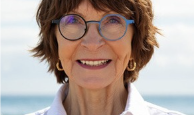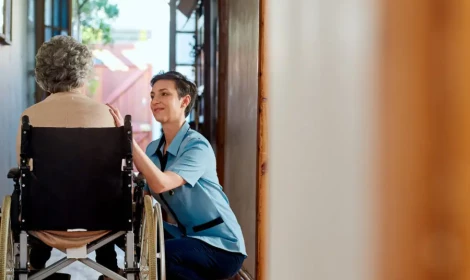Why 'Planning is An Act of Love'
Taking time to plan shows care beyond words. It eases future stress and ensures your loved ones are supported, even when you’re not there.


Planning is An Act of Love
By Melissa Weigle
We all hope for a peaceful, dignified end-of-life experience—but hope isn’t a plan.
When caregiving falls on one person’s shoulders, even love can’t carry the weight alone.
This edition dives into what a caregiver plan is, why it’s essential, and how to start one—before an emergency forces your hand. Discover how planning now is the most loving act you can offer later.
Real stories. Real strategies. Real peace of mind.
Last year, I visited a couple, married 65 years, in their waterfront condo in Naples, FL. I was contacted by some neighbors who were worried about their ability to care for themselves. In a common scenario, one spouse was acting as the “brain” and the other, the “brawn”, functioning as a unit, although not really succeeding.
I was invited into their living room, offered a chair next to the husband, (the brain) with a prime view of the manatees splashing just off their dock. It was an absolutely stunning view. I quickly discovered that Ed’s health was failing, and his wife, Mary, was in the mid to late stages of dementia. Neighbors had pitched in as able, but the situation was escalating. Ed shared that he had just received a terminal diagnosis. Although I had just met him, I could tell he was a no nonsense kind of guy. “What’s the plan,” I asked after he shared his new diagnosis. He painted the picture of their goal, sitting in their easy chairs, looking at their water view, and dying peacefully, together, while holding hands.
It is a common dream for people to visualize a peaceful death, usually involving laying down for bed and never waking up. During our presentations, we ask, “Who would like to die in their sleep and bounce their last check?” No matter how many people are in attendance, each and every one of them will raise a hand. I can’t say I blame them, but reality is far from that dream.
By now, we all know the details of Gene Hackman and his wife Betsy Arakawa’s last few weeksReports state that Betsy did everything she could to provide the best care for Gene in past years, including encouraging exercise to combat his cardiovascular disease and hypertension. It is believed that Betsy died on or around February 11 from a rare disease resulting from an infection through contact with rodents. Hackman’s pacemaker recorded his last heartbeat 7 days later, and his cause of death was determined to be hypertension and heart disease. While we don’t know exactly what happened in that home in the seven days between her death and his, we can assume that Both Gene and Betsy’s deaths could have happened (or not happened) in a kinder and more gentler manner.
There have been countless articles and speculation around this incident, however, after 30 years in senior care, I can tell you that this situation is a normal incident that happens regularly with our older population. So many of us loved Gene Hackman and are horrified at the incident and the ideas of what it must have been like in that home. We must all stop and look at this as a wake-up call for our own loved ones. This is not a rare occurrence. This is not an impossibility. This should not be a surprise.
Most of the time, the “brain” part of the couple is focused on the promises that were made in younger years and the misplaced responsibility that they believe is to provide and care for their partner and make it possible to die together looking out at the manatees and beautiful water views.
What is a caregiver plan?
Just like planning for retirement or a wedding, caregiving requires a structured approach to providing effective and sustainable results. A well thought out plan helps prevent burnout, ensure consistency of care, and provide clarity for all involved.
Why do you need a caregiver plan?
Caretaking spouses have a 63% higher chance of dying or becoming ill than their non caregiving counterparts. It is also common for caregivers to take on the full responsibility of caregiving, be it to keep promises, protect their spouse's privacy, or denial to the depth of the situation. Planning allows for care options based on current situations, better outcomes, potential savings, and less stress. Remember that planning is an act of love, valuing their well being, dignity, and autonomy.
● Planning gives voice to everyone involved
Prioritizing open, honest, and hard conversations ensures everyone's voice is heard.
Making decisions prior to the emergency allows responsibilities to be weighted and concerns addressed in a calm and rational environment. Input can be obtained from professions like elder care strategists, geriatric specialists, and personal physicians, resulting in a well-informed plan.
● Planning provides of roadmap
Defining roles and responsibilities keeps everyone informed and spreads out the care obligations. By setting milestones including regular medical check ups, necessary home modifications, and mental health check ins, roles can be divided and burdens can be shared. Take into consideration the financial obligations for care in the home or a care community, insurance considerations, and long term financial goals.
● Planning gives peace of mind
Emergency preparedness makes you better equipped to handle unexpected care situations, financial obligations, medical emergencies, and sudden changes to health or lifestyle. Because caregiver burnout is a real and valid concern, ensuring shared caregiving responsibilities means exhaustion can be reduced or alleviated. Research respite care opportunities such as adult day care, in home private care, and short term assisted living options.
How to start your Caregiver Plan?
Like all good plans, start with the goal of empathy and understanding. Go in with the expectation that while the conversation will be difficult, being open, honest, and staying calm will help. Setting clear boundaries and expectations from the start, while breaking the plan into small steps keeps the conversation from getting overwhelming. Offer a gradual introduction of care, such as meal prep or housekeeping and build gradually from there. Highlight the benefits of outside help to the caregiver such as less toll on their body, more time for themselves to refresh, better sleep, or spending time together in fun activities as opposed to just providing care. Balance your loved one’s need for independence with your need for help. Finally, utilize external support as needed.
Planning for the caregiving journey is an act of love, giving a voice to all involved, providing a roadmap for unexpected situations and emergency considerations, and offering peace of mind to both you and your loved ones. No one can predict the future, but with a caregiver plan, you are prepared for what the future holds. Gene Hackman’s situation is a sad reminder that not having a plan can be threatening. Luckily, Ed and Mary had a different result. With the encouragement of neighbors, family, and an Elder Care Strategist, Ed and Mary created a caregiver plan. After Ed’s passing, Mary was moved closer to her loving family in a memory care community, where she gets daily activities, pet therapy visits, nourishing meals, and frequent family visits. Planning can make all the difference. Reach out to Senior Care Authority of SWFL to help you create your caregiver plan today.
Do you know and/or love a couple that look like Gene and Betsy or Ed and Mary? Are you confused about how to start the planning for an emergency?
1 in 3 die from complications of Alz or dementia between 2000 and 2019: deaths from heart disease decreased by 7.3%, while deaths from Alzheimer's disease increased by 145%
● Lifetime cost of caring for someone with dementia is $373,527
● Florida has the second highest prevalence of Alzheimer's disease in the nation (second only to California)
● It is the sixth leading cause of death in the United States
*Names have been changed
Stories
Hackman
Trotskys
About the Author

Melissa Weigle
Melissa Weigle has been supporting seniors and their families for over 25 years across all levels of care including skilled nursing, assisted living, memory care, independent living, hospice, in-home care and active community-based programs. As a recent empty nester, Melissa is excited to relocate to Southwest Florida and continue her passion for making a difference in the lives of senior citizens with an empathetic ear and compassionate approach.
Melissa has a BA in Social Work with a Gerontology concentration from Towson University in Maryland. When not spending time with her husband and 2 children, both currently attending the University of Florida.
Melissa lives and works in Southwest Florida, and supports families across the US.





